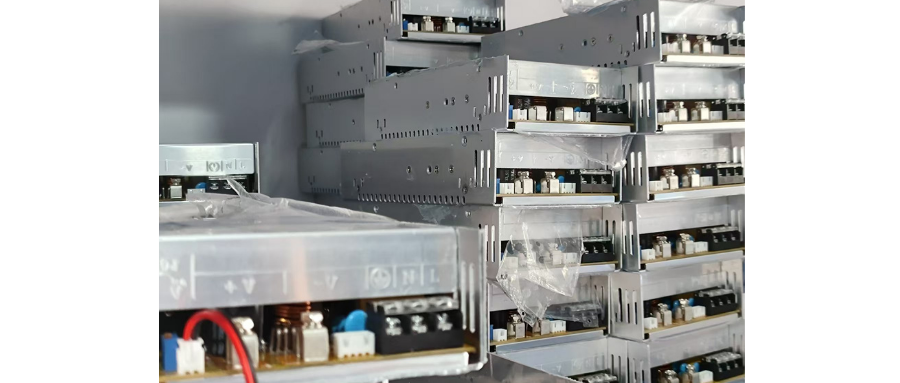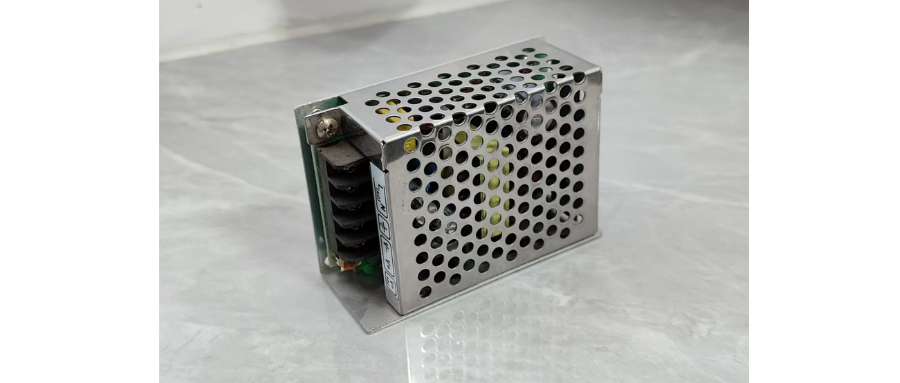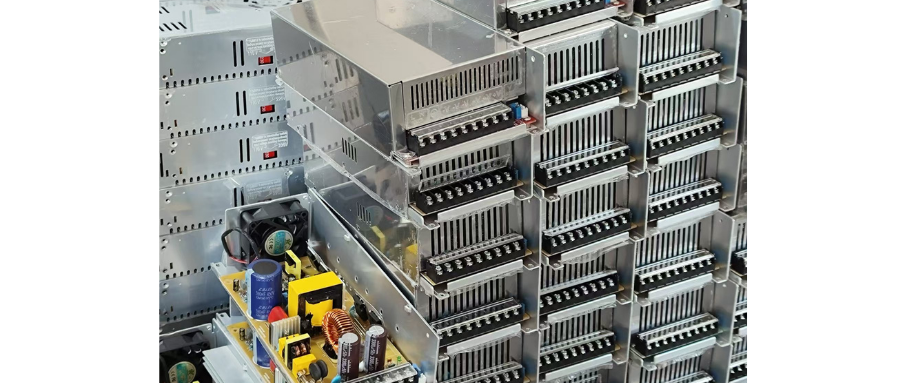Power supplies are an indispensable component of various electronic devices, and their performance is directly related to the technical indicators of electronic devices and whether they can work safely and reliably. Currently, there are two common types of DC regulated power supplies and switching power supplies. Since the switching power supply itself consumes low energy, the power supply efficiency is doubled compared to ordinary linear regulated power supplies, and it is widely used in various industries such as electronic computers, communications, and home appliances. For the widespread application of switching power supplies, it is necessary to understand its principles and grasp its development trends, which will be of great help to practical work. Switching power supplies (Switch Mode Power Supply, or SMPS) are known as high-efficiency and energy-saving power supplies. They represent the development direction of regulated power supplies and have become the mainstream products of regulated power supplies.

With the global attention to energy issues, the energy consumption of electronic products will become more and more prominent. How to reduce its standby power consumption and improve power supply efficiency has become an urgent problem to be solved. Although the traditional linear voltage regulator has a simple circuit structure and reliable operation, it has the disadvantages of low efficiency (only 40%-50%), large size, large copper and iron consumption, high operating temperature and small adjustment range. In order to improve efficiency, people have developed a switching voltage regulator, which has an efficiency of more than 85% and a wide voltage regulation range. In addition, it has the characteristics of high voltage regulation accuracy and no power transformer. It is an ideal voltage regulator. Because of this, the switching voltage regulator has been widely used in various electronic devices. The switching power supply is to control the switch tube through the circuit to conduct high-speed conduction and cutoff, convert direct current into high-frequency alternating current and provide it to the transformer for transformation, thereby generating the required one or more groups of voltages.
Switching power supplies are classified according to the control principle, and there are roughly three working modes:
1.Pulse width modulation, referred to as pulse width modulation (PWM). Its main feature is fixed switching frequency, and the duty cycle is adjusted by changing the pulse width to achieve the purpose of voltage regulation. Its core is the pulse width modulator. The fixed switching cycle provides convenience for the design of filter circuits. However, its disadvantage is that it is limited by the minimum on-time of the power switch, and the output voltage cannot be adjusted over a wide range; in addition, the output end is generally connected to a dummy load (also called preload) to prevent the output voltage from rising when unloaded. At present, most integrated switching power supplies use PWM.
2.Pulse frequency modulation, referred to as pulse frequency modulation (PFM). Its characteristic is that the pulse width is fixed, and the duty cycle is adjusted by changing the switching frequency to achieve the purpose of voltage regulation. Its core is the pulse frequency modulator. In circuit design, a fixed pulse width generator should be used to replace the sawtooth wave generator in the pulse width modulator, and a voltage-frequency converter (such as a voltage-controlled oscillator VCO) should be used to change the frequency. Its voltage regulation principle is: when the output voltage Uo increases, the pulse width of the controller output signal remains unchanged and the period becomes longer, so that the duty cycle is reduced and Uo is reduced. The output voltage adjustment range of the PFM switching power supply is very wide, and the output end does not need to be connected to a dummy load. The modulation waveforms of the PWM mode and the PFM mode, tp represents the pulse width (i.e., the on-time tON of the power switch tube), and T represents the period. It is relatively easy to see the difference between the two. But they also have something in common:
(1) Both use the voltage regulation principle of time ratio control (TRC). Whether changing tp or T, the pulse duty cycle is ultimately adjusted. Although the methods used are different, the control objectives are the same, which can be said to be different paths to the same goal.
(2) When the load changes from light to heavy, or the input voltage changes from high to low, the output voltage is kept stable by increasing the pulse width and increasing the frequency respectively.
3) The hybrid modulation method refers to a method in which the pulse width and switching frequency are not fixed and can change each other. It is a hybrid method of PWM and PFM. It includes a pulse width modulator and a pulse frequency modulator. Since both and T can be adjusted separately, the duty cycle adjustment range is the widest, which is suitable for making a switching power supply with a wide range of output voltage adjustment for laboratory use.

The above three working modes are collectively referred to as the "time ratio control" (TRC) method. It should be pointed out that the pulse width modulator can be used as an independent integrated circuit (such as UC3842 pulse width modulator), can be integrated into a DC/DC converter (such as LM2576 switching regulator integrated circuit), and can also be integrated into an AC/DC converter (such as TOP250 monolithic switching power supply integrated circuit). Among them, the switching regulator belongs to the DC/DC power converter, and the switching power supply is generally an AC/DC power converter.
The typical structure of the switching power supply is shown in Figure 2. Its working principle is: the mains power entering the power supply is first converted into high-voltage DC power through rectification and filtering, and then converted into high-frequency low-voltage pulses through the switching circuit and high-frequency switching transformer, and then through the rectification and filtering circuit, and finally outputs a low-voltage DC power supply. At the same time, there is a circuit in the output part that feeds back to the control circuit, and the output voltage is stabilized by controlling the PWM duty cycle.
 Switching power supply - basic principles and development trend analysis of switching power supply
Switching power supply - basic principles and development trend analysis of switching power supply
The switching power supply consists of the following 4 parts:
1.Main circuit: the main circuit from AC grid input to DC output. It mainly includes input filter, rectification and filtering, inverter, output rectification and filtering.
(1) Input filter: Its function is to filter the noise in the power grid, and at the same time prevent the noise generated by the machine from being fed back to the public power grid.
(2) Rectification and filtering: Directly rectify the AC power of the power grid into smoother DC power for the next level of conversion.
(3) Inversion: Convert the rectified DC power into high-frequency AC power, which is the core part of the high-frequency switching power supply. The higher the frequency, the smaller the ratio of volume, weight and output power.
(4) Output rectification and filtering: Provide stable and reliable DC power according to load requirements.
2) Control circuit: On the one hand, sample from the output end, compare with the set standard, and then control the inverter to change its frequency or pulse width to achieve output stability. On the other hand, according to the data provided by the test circuit, after identification by the protection circuit, provide the control circuit to take various protection measures for the whole machine. Including output sampling circuit, feedback circuit and pulse width modulator.
3) Detection and protection circuit: The detection circuit has overcurrent detection, overvoltage detection, undervoltage detection, overheat detection, etc.; the protection circuit can be divided into overcurrent protection, overvoltage protection, undervoltage protection, clamping protection, overheat protection, automatic restart, soft start, slow start and other types.
4) Other circuits: such as sawtooth generator, bias circuit, optocoupler, etc.

The efficiency of the switching power supply is much higher than that of the linear power supply. This saves energy, so it is favored by people. But it also has disadvantages, that is, the circuit is complex, maintenance is difficult, and the pollution to the circuit is serious. The power supply noise is large and is not suitable for some low-noise circuits. The technical pursuit and development trend of the switching power supply can be summarized into the following five aspects:
1.Miniaturization, thinness, lightness, and high frequency.
2.High reliability.
3.Low noise.
4.Use computer-aided design and control.
5.Low output voltage technology.
The development of switching power supplies has always been closely related to the development of semiconductor devices and magnetic components. The realization of high frequency requires corresponding high-speed semiconductor devices and high-frequency electromagnetic components with excellent performance. The development of new high-speed devices such as power MOSFET and IGBT, the development of low-loss magnetic materials for high frequency, the improvement of the structure and design methods of magnetic components, the improvement of the dielectric constant of filter capacitors and the reduction of their equivalent series resistance have always played a huge role in promoting the miniaturization of switching power supplies.
At present, switching power supplies are widely used in almost all electronic devices such as various terminal devices and communication equipment dominated by electronic computers due to their small size, light weight and high efficiency. They are an indispensable power supply method for the rapid development of today's electronic information industry; and the switching power supply is required to be small and light, and the switching power supply is required to have higher efficiency, better performance and higher reliability.






